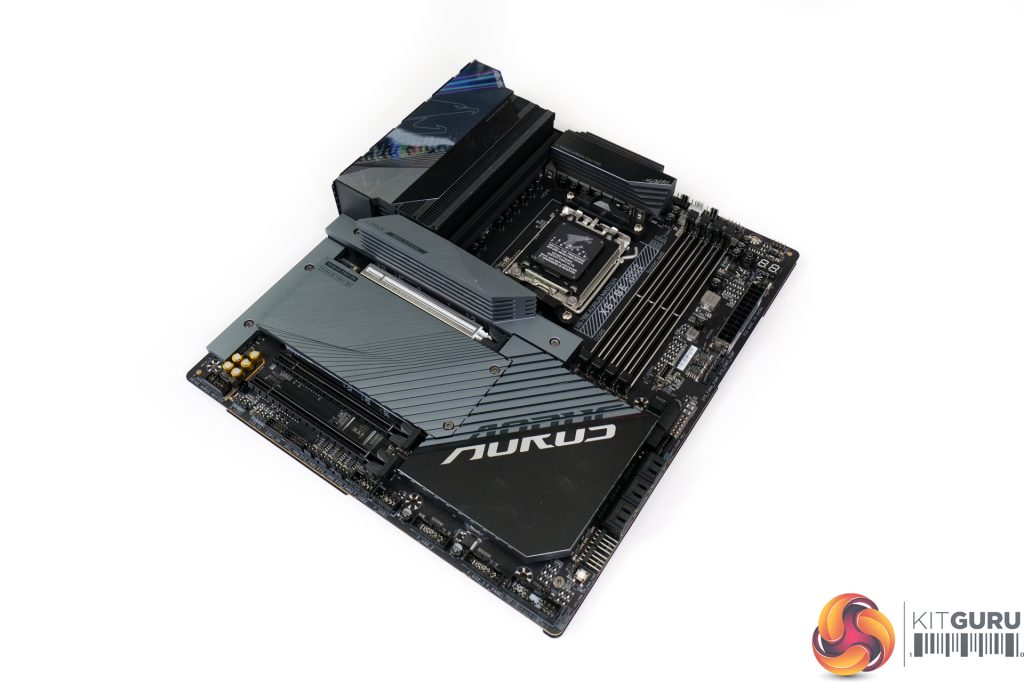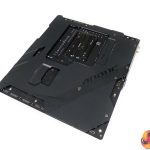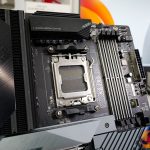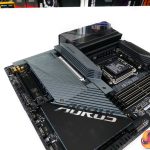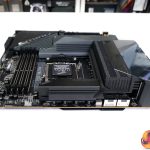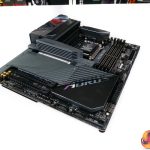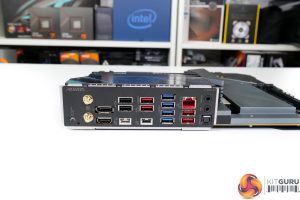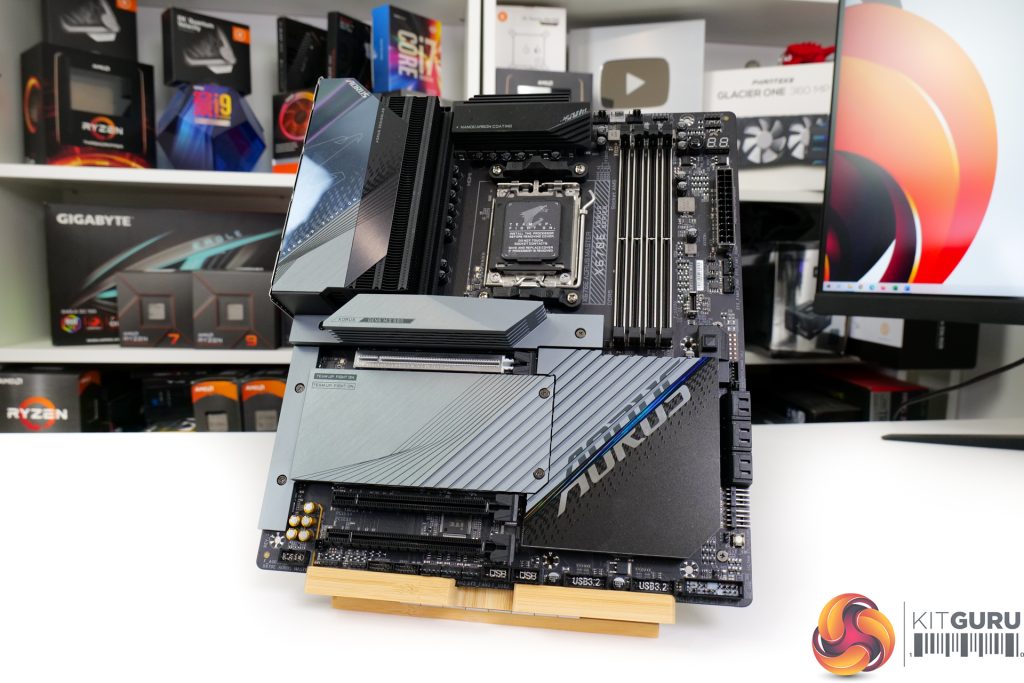But what if £780 isn’t with your budget? Let’s look at the Gigabyte X670E Aorus Master.
In terms of appearance, the E-ATX-sized X670E Aorus Master shares many similarities with its Aorus Xtreme sibling. The big difference comes in the price tag of a more tolerable £530 for the Master in the UK.
There’s a little more grey and less black on the heatsink of the Aorus Master, but this does nothing to downgrade them in terms of performance, by the looks of it.
We still get sizable slabs of metal covering the AMD chipset and the quadruple M.2 connectors. The only other key difference is that the rear IO cover is toned down a little, but it still features the eye-catching Aorus branding. And it still sits atop a couple of sizable VRM cooling heatsinks.
Speaking of the VRM, we get a twin 16+2+2 digital design on an 8-layer PCB. The VCore VRM is a twinned approach which means there is a doubled 8+8 setup using ludicrous 105A power stages.
And given the cooling equipped on the front and rear side of this motherboard, they should be fine to deliver ludicrously high current levels if you want to push.
Slots are an area where this motherboard differs to the flagship. Of the four M.2 SSD connectors, two are now PCIe Gen5 and the other two are Gen4. In reality, this will be absolutely fine for most users for quite a long time.
You still get the thick, reinforced PCIe Gen 5 x16 expansion slot for graphics cards as well as the useful PCIe EZ-Latch Plus button for easy card removal.
The DIMM slots, 24-pin connector, and dual 8-pins are all reinforced for durability. Plus, you still get the pair of full-length PCIe expansion slots along the bottom.
Much of the feature-rich connector setup is maintained with the Aorus Master from its flagship sibling. The internal USB-C header is one again 20Gbps, and we still see six right-angled SATA ports.
They are in addition to the equally-impressive serving of 4-pin fan headers and RGB connections distributed around the motherboard. Plus, the onboard diagnostic LEDs, power button, and voltage readings point continue to be offered up.
Rear IO capabilities are an area where the Master differs to the Xtreme, but the differences are unlikely to be a concern for even many enthusiast users.
Ample USB Type-A connectivity is maintained and we still get dual USB Type-C connector, one of which is 20Gbps. Now though, the 10Gbps USB-C port features display output connectivity in DP Alt Mode. And that’s very useful alongside a full-sized HDMI and DisplayPort connector to users want to run a hybrid graphics setup.
Networking is downgraded from the Xtreme but will still impress the vast majority of people. 802.11ax WiFi 6E connectivity is smartly maintained. But now the Ethernet port is via an Intel 2.5Gb NIC. And the large clear CMOS button is dropped in favour of a solitary Q-Flash Plus button.
Gigabyte’s X670E Aorus Master looks to be an absolutely superb motherboard when focussing on our brief overview of its feature-set. It maintains many of the sensible offerings from the Aorus Xtreme but it cuts down minor points in areas that are justifiable for the £250 price reduction.
A high-end VRM setup, seemingly positive heatsinks, and ample connectivity – yep, we’re looking forward to using this board some more!
 KitGuru KitGuru.net – Tech News | Hardware News | Hardware Reviews | IOS | Mobile | Gaming | Graphics Cards
KitGuru KitGuru.net – Tech News | Hardware News | Hardware Reviews | IOS | Mobile | Gaming | Graphics Cards


